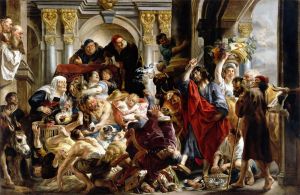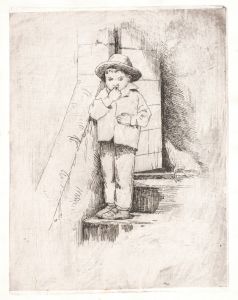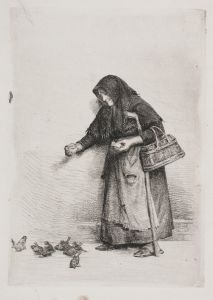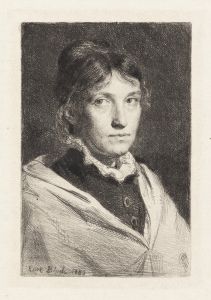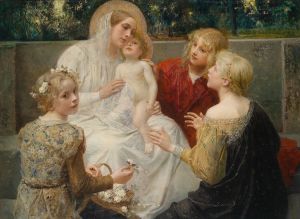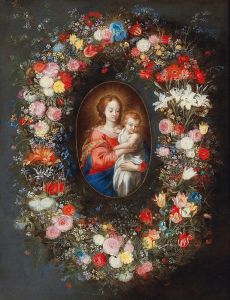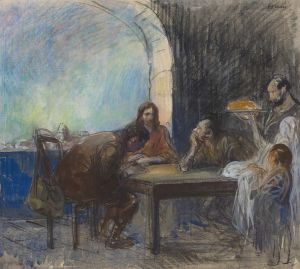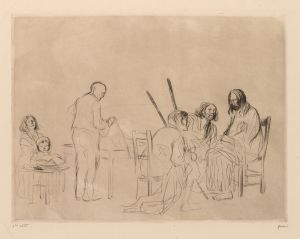
Woman at the Well
A hand-painted replica of Carl Bloch’s masterpiece Woman at the Well, meticulously crafted by professional artists to capture the true essence of the original. Each piece is created with museum-quality canvas and rare mineral pigments, carefully painted by experienced artists with delicate brushstrokes and rich, layered colors to perfectly recreate the texture of the original artwork. Unlike machine-printed reproductions, this hand-painted version brings the painting to life, infused with the artist’s emotions and skill in every stroke. Whether for personal collection or home decoration, it instantly elevates the artistic atmosphere of any space.
"Woman at the Well" is a painting by the Danish artist Carl Bloch, created in 1877. Carl Bloch, born on May 23, 1834, and died on February 22, 1890, was a prominent 19th-century painter known for his religious and historical works. Bloch's art is characterized by its detailed realism and emotional depth, which has made his works highly regarded in both his native Denmark and internationally.
The painting "Woman at the Well" depicts the biblical scene from the Gospel of John, chapter 4, where Jesus speaks with the Samaritan woman at Jacob's Well. This encounter is significant in Christian theology as it highlights themes of redemption, the breaking of social barriers, and the living water that Jesus offers, symbolizing eternal life.
In the painting, Bloch captures the moment of conversation between Jesus and the Samaritan woman. Jesus is seated by the well, engaging in a profound dialogue with the woman, who stands beside him holding a water jar. The setting is a serene, rural landscape, which enhances the contemplative and intimate nature of the scene. Bloch's use of light and shadow adds depth to the composition, drawing the viewer's attention to the central figures and their expressions.
Bloch's portrayal of the Samaritan woman is notable for its empathy and humanity. The woman is depicted with a sense of dignity and curiosity, reflecting the transformative impact of her encounter with Jesus. Bloch's attention to detail in the woman's attire and the surrounding environment adds to the authenticity and timeless quality of the painting.
"Woman at the Well" is part of a larger body of work by Carl Bloch that focuses on New Testament themes. Bloch's religious paintings were commissioned for various churches and institutions, and they have played a significant role in shaping the visual representation of biblical stories in the modern era. His works are celebrated for their ability to convey complex theological concepts through accessible and emotionally resonant imagery.
The painting is housed in the Frederiksborg Palace in Hillerød, Denmark, which is home to a significant collection of Bloch's works. Frederiksborg Palace, a historic royal residence, now serves as the Museum of National History, showcasing Danish art and history. Bloch's paintings, including "Woman at the Well," are among the highlights of the museum's collection, attracting visitors from around the world.
Carl Bloch's influence extends beyond his lifetime, as his works continue to inspire and be appreciated for their artistic and spiritual depth. "Woman at the Well" remains a testament to Bloch's skill as a painter and his ability to bring biblical narratives to life with sensitivity and reverence.





